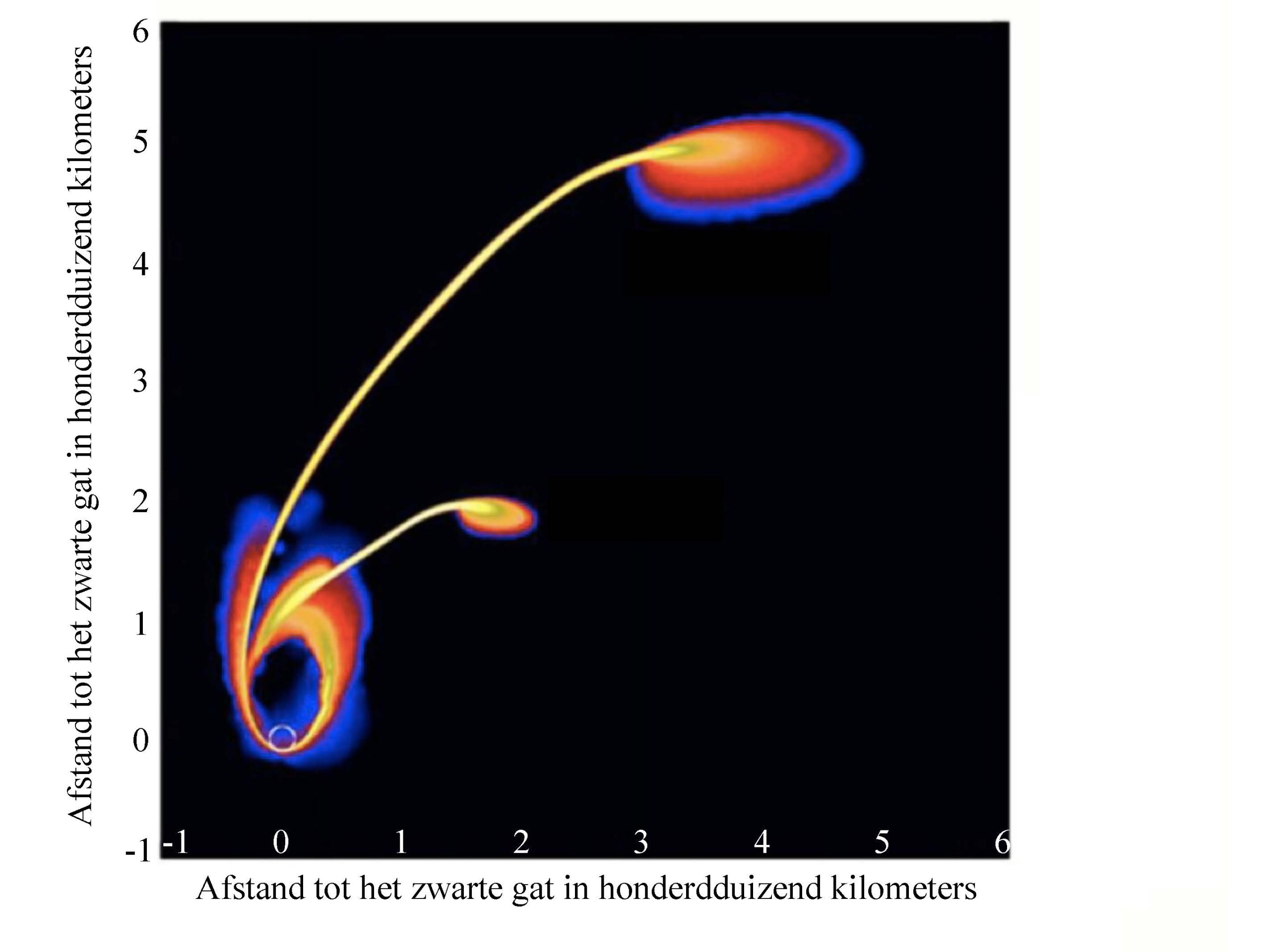{multithumb thumb_width=225}
On the edge of the nearby galaxy Messier 86, astronomers have observed a strange X-ray flash. This flash has almost certainly been caused by a rare cosmic accident in which a small star is pulled apart by a medium-sized black hole. The discovery may provide the missing evidence for the existence of medium-size black holes.

The X-ray signal which was investigated by Dutch astronomer Peter Jonker and his team (SRON, Radboud Universiteit Nijmegen), first of all reveals two small emissions with a pause of 4000 seconds in between. Another 4000 seconds later the quantity of x-ray radiation suddenly increases by a factor of 100 and then gradually decreases again. This is very similar to the signal predicted for a medium-sized member of the family of black holes, which pulls apart a so-called white dwarf (the remnants of a star like our sun).
The period of 4000 seconds concurs with the time needed for the material from the torn star to rotate once around a black hole about 10,000 times as heavy as the sun. These medium-sized black holes – astronomers have also discovered small and supermassive black holes – could have arisen early in the history of the universe from the first generation of super stars. The space around galaxies should therefore be full of these but up until now there was no strong evidence for the presence of this intermediate type of black hole.
Tip of the iceberg
The discovery by Peter Jonker et al. may provide the missing evidence. Jonker: “This is probably the tip of the iceberg because we have found more of this strange type of X-ray flashes. Aidan Glennie, PhD student at Oxford, is working with me on a study of two comparable signals from different galaxies. As the chances of such a black hole capturing a star and pulling it apart is very small, this means that there are probably many medium-sized black holes.”
If more medium-sized black holes were found, it would make it more plausible that supermassive black holes evolved from the merging of medium-sized black holes. The presence of supermassive black holes in the early universe in particular, is difficult to explain if there are no medium-sized black holes.
Hopefully it will also be possible to observe the merging process in the near future with the improved LIGO, Virgo and eLISA facilities. Astronomers hope to use these to measure the gravity waves transmitted by two merging medium-sized black holes. It might also be possible for the astronomers to compare the characteristics of the strongly deformed space-time surface near a black hole with Einstein’s predictions. This is because a white dwarf is torn apart very close to a black hole.
Research and publication
Peter Jonker’s research took place at SRON Netherlands Institute for Space Research in Utrecht and at Radboud University Nijmegen. Jonker could observe the X-ray flash thanks to observations from NASA’s space telescope Chandra. For their discovery, he and his team ploughed through hundreds of thousands of X-ray sources discovered by chance, searching for abnormal patterns.
The research results have been accepted for publication in ‘The Astrophysical Journal’, under the title “Discovery of a new kind of explosive X-ray transient near M86”. The publication can be found online at: http://arxiv.org/abs/1310.7238
The authors are: Peter G. Jonker (SRON, Radboud University Nijmegen), Aidan Glennie (University of Oxford), Marianne Heida (SRON, Radboud University Nijmegen), Tom Maccarone (Texas Tech University), Simon Hodgkin (University of Cambridge), Gijs Nelemans (Radboud University Nijmegen), James Miller-Jones (Curtin University), Manuel A.P. Torres (SRON, Radboud University Nijmegen) and Rob Fender (University of Oxford).


